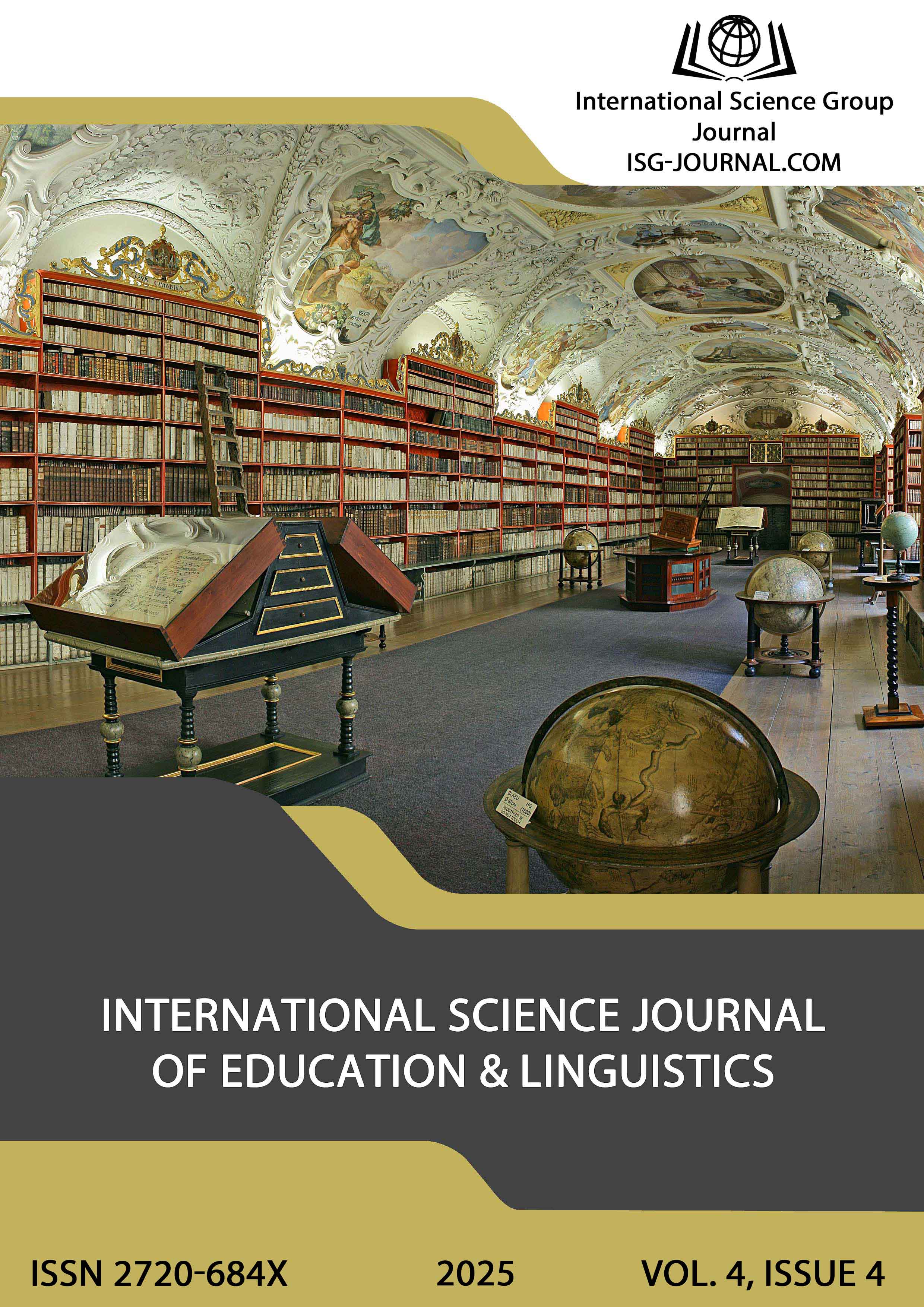Beyond equivalence: cultivating critical linguistic awareness through translation for foreign language learners
DOI:
https://doi.org/10.46299/j.isjel.20250404.06Keywords:
translation, linguistic awareness, foreign language learning, equivalence, cultural understanding, language nuances, critical thinkingAbstract
This article explores the transformative potential of translation as a pedagogical tool in fostering critical linguistic awareness among foreign language learners. Moving beyond a simplistic view of translation as mere equivalence, the study argues that engaging with translation, both theoretically and practically, compels learners to delve deeper into the nuances of language, enhancing their understanding of linguistic structure, cultural embeddedness, and pragmatic function. While traditional language teaching methodologies often sideline translation, considering it a hindrance to direct thought in the target language, contemporary perspectives increasingly acknowledge its cognitive benefits. This research examines how the process of translating necessitates a meticulous analysis of lexical, grammatical, and stylistic choices in both the source and target languages, thereby refining learners’ analytical skills and sensitizing them to subtle semantic and stylistic differences. Furthermore, it discusses how grappling with non-equivalence and cultural specificities during translation cultivates a profound awareness of intercultural communication and the intricate relationship between language and culture. The article reviews pedagogical approaches that integrate translation exercises into advanced foreign language curricula, demonstrating how such activities can serve as catalysts for developing a sophisticated understanding of linguistic phenomena. Ultimately, this work advocates for a re-evaluation of translation’s role in language education, proposing that by embracing its complexities, educators can equip learners not only with proficiency but also with a critical linguistic awareness essential for navigating a multilingual and multicultural world.References
Baker, M. (2018). In other words: A coursebook on translation (3rd ed.). Routledge.
Cook, G. (2010). Translation in language teaching: An argument for reassessment. Oxford University Press.
Gómez, C. (2019). Translation and language learning: Bridging the gap between theory and practice. Cambridge University Press.
Kelly, D. (2005). A handbook for translator trainers: A guide to reflective practice. St Jerome Publishing.
Hulstijn, J. H. (2015). Language proficiency in native and non-native speakers: Theory and research. Routledge.
Kearns, J. (2009). Translator and interpreter training: Issues, methods, and debates. In Journal of Languages & Translation, 5(1), 255. Continuum.
Kozłowski, A., & Jabłoński, M. (2021). The impact of translation techniques on advanced language learners: An experimental study. Language Learning Journal, 49(4), 443–458. https://doi.org/10.1080/09571736.2020.1760923
Leonardi, V. (2010). The role of translation in language teaching: Back to basics. Peter Lang.
Li, S., & Grant, L. (2021). Bilingualism and language interference: Implications for language education. Bilingual Research Journal, 44(2), 142–157. https://doi.org/10.1080/15235882.2021.1925608
Pym, A. (2010). Exploring translation theories. Routledge.
Malekzadeh, A., & Keshavarz, M. (2022). Translation techniques and their effects on language proficiency: Evidence from experimental research. Journal of Language Teaching and Research, 13(2), 218–232. https://doi.org/10.17507/jltr.1302.02
Malmkjaer, K. (2019). The Routledge linguistics encyclopedia (4th ed.). Routledge.
Moon, R. (2019). Fixed expressions and idioms in English: A corpus-based approach. Routledge.
Shiyab, S. M. (2017). Translation: Theoretical concepts. Cambridge Scholars Publishing.
Tymoczko, M. (2017). Translation and power. Routledge.
Downloads
Published
How to Cite
Issue
Section
License
Copyright (c) 2025 Alla Shykun

This work is licensed under a Creative Commons Attribution 4.0 International License.





